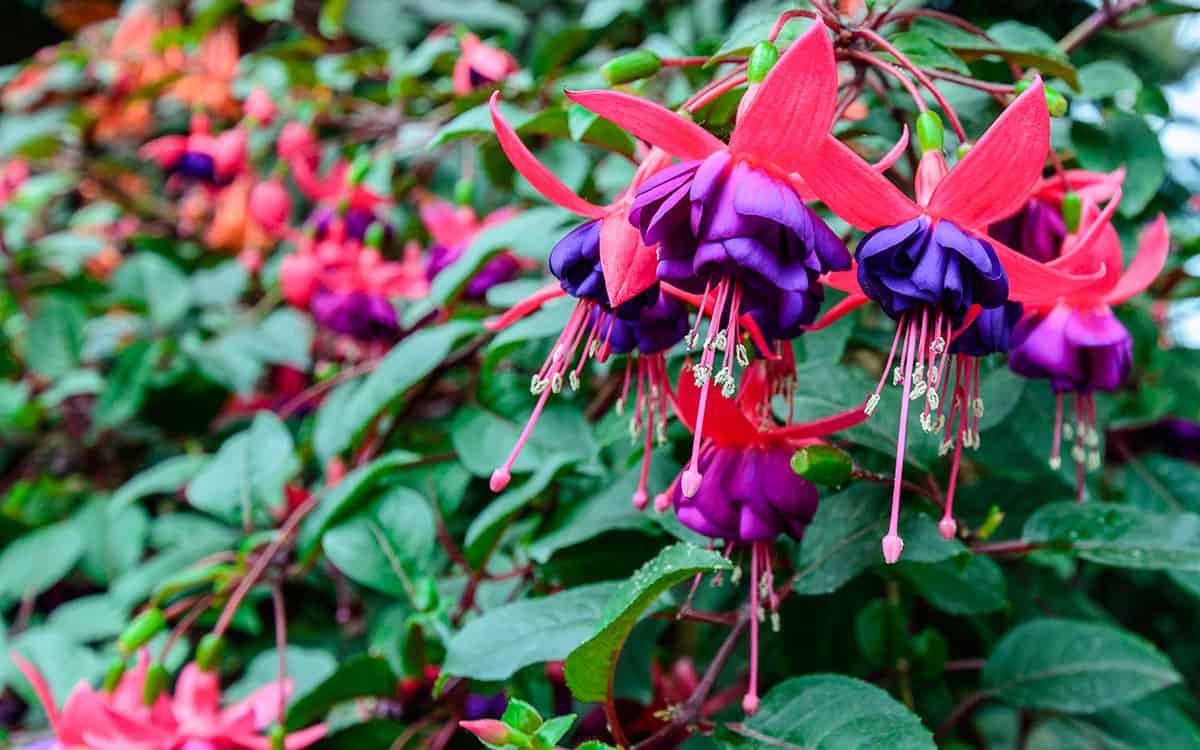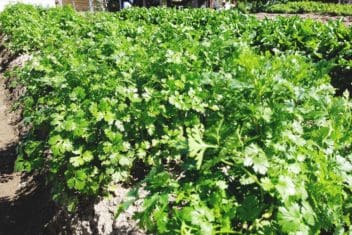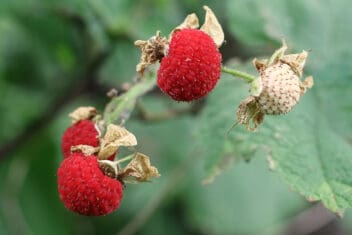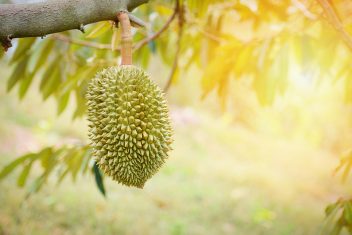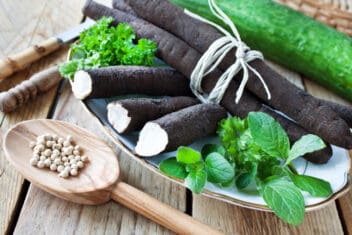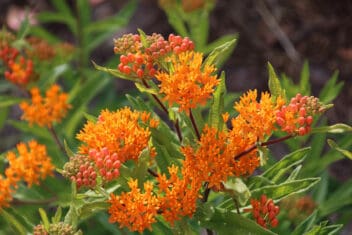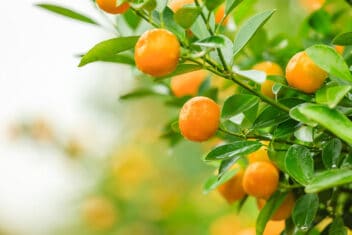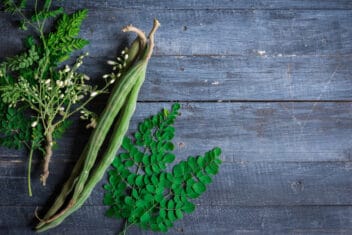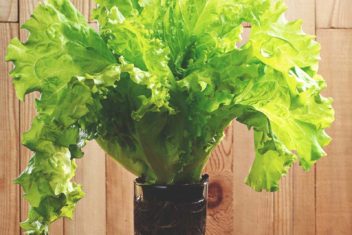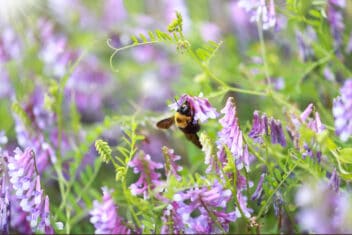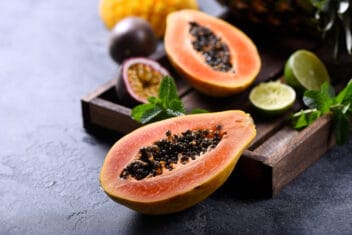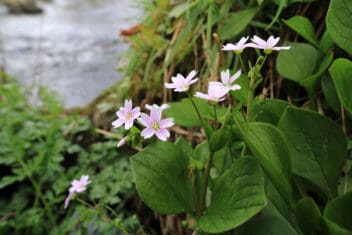Fuchsias are my favorite flowers for growing. I love to raise them in containers on my deck because the hanging flowers of all colors look delicate, showy, and classy. In a group or on a large shrub, the sea of blooms makes any area of the garden look inviting and serene.
The one thing I didn’t originally like about these plants was the black mess of the berries at the end of the flowering season. To my embarrassment, I didn’t know that I could have been eating those berries all along! Turns out, not many people realize that fuchsia berries, leaves, and flowers are edible.
If you’re looking for yummy berries and beautiful blossoms, let’s get started with growing fuchsia. It’s worth it, I promise.
What are Fuchsias?
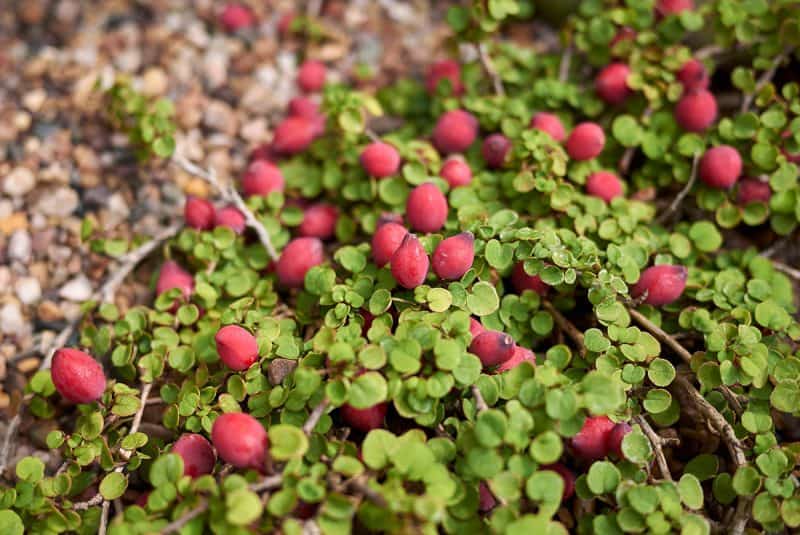
While most people grow it as an annual, this tender perennial erupts into colorful flowers in late spring and can stay in blossom until early winter year after year. There are over 100 different species and over 3,000 hybrids and varieties of this varied plant.
Fuchsias are native to South and Central America, Tahiti, New Zealand, and Haiti. The modern beauties that gardeners enjoy all around the world originated from these locations.
All fuchsia varieties produce edible berries that are high in antioxidants and vitamin C. But be aware, not all of them taste nice. Some can be bitter, while some can be sweet like cherry or raspberry.
That’s okay; almost all you can buy in stores are stunningly beautiful, with numerous frilly blossoms. The berries are a marvelous bonus.
Most of the plants you buy from commercial sellers are hybrids. They’re designed for color and multiple blooms, not flavorful berries. But there are some out there that were bred to be as delicious as they are beautiful, and many native species are delicious rather than showy.
Fuchsias come in two growth habits: trailing and upright. Trailing is perfect for hanging baskets or areas where you want them to hang or trail. Upright, bushy types are great for ground containers and gardens.
Varieties of Fuchsia
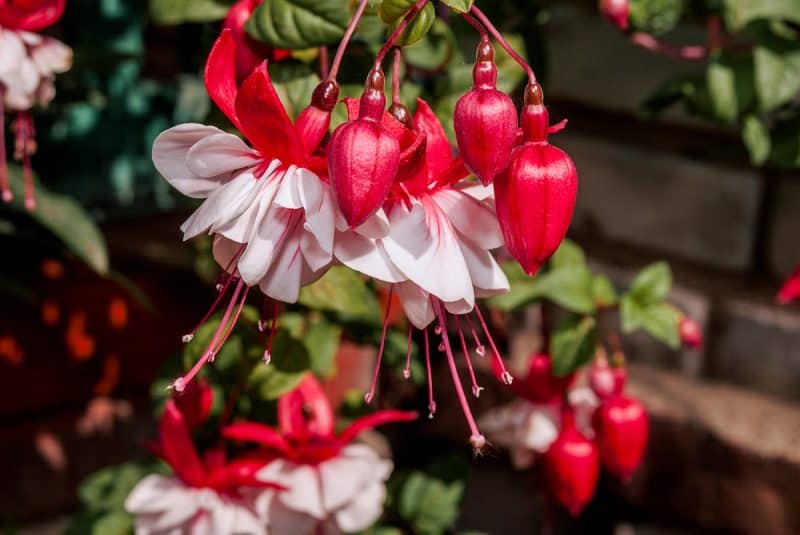
There are so many species, varieties, and hybrids; there’s something for everyone looking to start growing fuchsias. Check with local sellers for which varieties grow best in your area and what nearby gardeners choose for eating or for the flowers.
Below are the best fuchsia species to eat and the varieties that produced the most fruit.
- Fuchsia coccinea – This is one of the best-tasting, by far. The seeds are tiny, and as long as I left the berries on the plant until they were as dark as possible, there was no strange aftertaste like some of the others I sampled.
- Fuchsia procumbens – This is also a delicious, creeping variety found natively in coastal areas. The berries are bigger than most other fuchsias and look a lot like grapes. The flower is unusual and quite small.
- Fuchsia splendins – Found in Central America, this one is another with a wonderful tasting berry. It has a peppery, sweet aftertaste with some acidity.
- Fuchsia alpestris – This is predominantly found in Brazil and although initially sweet-tasting, some people find it has an unpleasant aftertaste.
- Fuchsia aborescens – This variety grows naturally in Mexico and produces round fruit. It is reasonably sweet tasting with an aftertaste that is quite pleasant.
- Fuchsia paniculata – Native from Mexico to Panama, this variety often has so many berries it reminds me of a bunch of grapes. The fruit is round and dark purple. It’s sweet and makes a wonderful jam.
- Fuchsia boliviana – This is a popular variety in South America and you can find the berries for sale in local markets there.
- Fuchsia microphylla – While the berries aren’t the best tasting and quite small, they suit cooking are perfect for sweet desserts. These are native to Central America.
- Fuchsia magellanica – Known as hardy fuchsia, this is one variety that likes full to partial sun. It will grow in USDA Growing Zones 6 to 9. There are many hybrids and cultivars, and they all vary in taste and flower size.
If you’re looking for large, showy flowers rather than berries, here are some plants to check out:
- ‘Dollar Princess’ is a magellanica with big, bold, beautiful flowers in violet and pink.
- ‘Seventh Heaven’ has massive, double white and pink blossoms.
- ‘Rapunzel’ is extremely long and trailing, with purple and white flowers.
- ‘Shrimp Cocktail’ is a hardy type with medium pink flowers.
- ‘Debron’s Black Cherry’ has purple petals so dark they almost look black, with bright pink sepals.
- ‘Checkerboard’ has beautiful pink and white flowers with a red crown.
How to Plant Fuchsia
Depending on the variety, fuchsias grow in Zones 6 to 11 as a perennial, though only hardy varieties can handle zones down to 6. In cooler areas, many gardeners choose to grow them as annuals because they can’t resist this wonderful plant.
You can also grow them in containers outside in warmer months and move them inside when it becomes cool. You can even keep fuchsias indoors as houseplants year-round.
Aim for a soil pH of 6.0-7.0 and make sure the soil drains well. Fuchsias are adaptable to different water amounts as long as their feet aren’t sitting in pools of water. Most prefer consistently moist – but not wet – soil.
Fuchsias usually need partial shade without hot afternoon sun. Check on your hybrid, though, as some do prefer full sun. While they can grow in full shade, they won’t usually bloom, or blooming will be reduced if they don’t get a few hours of direct sun.
Planting Seed
Seeds are best started indoors. They’re reliable germinators, but I still do a couple of things to ensure the best results.
I use a mixture of seed-raising mix, peat moss, and vermiculite. Using the bottom watering method, place the pot in a container of water and wait until the top of the soil in the container is damp, then remove from the water bath.
Sprinkle a few seeds over the top of the container and cover with a thin layer of the medium.
Cover the container with a plastic bag to create a little hothouse. Water to keep the soil moist, and within 21 days, you should see germination. The perfect germination temperature is 75ºF.
Once the plants poke through the surface, remove the plastic bag for two to three hours a day until the plants are about three inches tall.
At this point, transplant them to their own pots ready for your bigger containers or garden planting in spring.
Planting Cuttings
This is a super-simple process for growing fuchsias and there are a couple of methods to grow roots on a cutting.
Cut off a four-inch-long (or longer) tip of the plant with at least three leaf nodes. Remove lower leaves and dip the bottom in rooting hormone before planting two inches deep in a container filled with a seed-raising mix. Plant several cuttings in case some aren’t a success.
Keep the cutting moist, and within four weeks your plant should have grown roots.
The other way to do this is to remove the growing tip as above and rather than placing it in some seed-raising mix, stand the cutting in a glass of water. Change the water every two days and you will see the roots growing. This is a great method to use when children are helping because they get to see the roots growing over time.
Once the roots have formed, replant in individual containers and grow to the point you can transplant them to their permanent spot. Keep in mind that plants started this way have weaker roots and will take longer to get established.
Caring for Fuchsia
If the fuchsia is in the ground, feed a well-balanced fertilizer in early spring. You want to make sure the plant is strong for all those flowers and berries. Also consider fertilizing every three weeks or so, but taper it off as you approach fall. Fish emulsion is always a favorite of fuchsias.
For fuchsias growing in a container, use a sustained release fertilizer so the plant is getting food throughout the season. Make sure the fertilizer contains phosphorus as this will promote flowering.
Water well enough to keep the soil surrounding the plant moist but not soaking. Keep an eye on the soil moisture in both spring and summer. These plants prefer to be constantly moist but don’t like wet feet. Keep in mind that hanging plants tend to dry out quickly, so keep an eye on them.
Give a light prune after flowering and berry production. Fuchsias flower on new wood, so remove old wood when you prune back hard in the winter.
You can also tidy up anytime. I’ve done it mid summer when a plant became particularly messy.
Pinch out some of the new growth tips to promote bushier plants and deadhead regularly throughout the season if you want to encourage flowers rather than berries.
Companion Planting for Growing Fuchsia
Given I grow fuchsia for the berries and the floral display, I like to grow them in my food forest or with other food plants. Try:
- Nasturtiums
- Blueberries
- Perennial spinach
- Currants
- Sage
- Rosemary
- Thyme
- Bay
Common Problems and Solutions for Growing Fuchsias
Fuchsias are suscpeptible to a number of pests and diseases, particularly fungal disease.
Aphids
Yep, aphids like to eat fuchsias. No surprise, right? Aphids seem to love just about every plant out there. Our guide can help you get a handle on the situation.
Botrytis blight
The first sign of this disease is a light-colored mold, especially on the base of flowers or berries. If you leave it, the buds will eventually rot and fall off.
The best defense is keeping it from getting started in the first place. Remove all garden debris around the fuchsia plant. Sterilize your gardening tools after pruning. Keep your plant as healthy as possible to avoid catching this in the first place.
Cut and burn any infected parts of the plant to avoid it spreading.
Root Rot
If your soil isn’t well-draining this disease can become a problem for fuchsia. Roots turn mushy or rot under the surface and it’s usually fatal to the plant.
Avoid over-watering, over-crowding, and planting in poorly draining soil. Make sure your container is able to drain water away efficiently.
Thrips
Thrips puncture and feed on the inside of plants. They cause distortion and leave their waste all over the plant which often looks like little black spots.
Thrips also cause the fuchsia to catch other diseases so controlling thrips saves a lot of heartache in the future.
I like to use an organic insecticidal soap or my favorite, neem oil.
Verticillium Wilt
This is a serious and often deadly disease that you may encounter when growing fuchsias. You need to learn about the early signs and symptoms. Read our in-depth article here.
Harvesting and Using Fuchsia Berries and Flowers
You can harvest and eat the flowers any old time that they are present. They tend to taste best when they are a bit more mature.
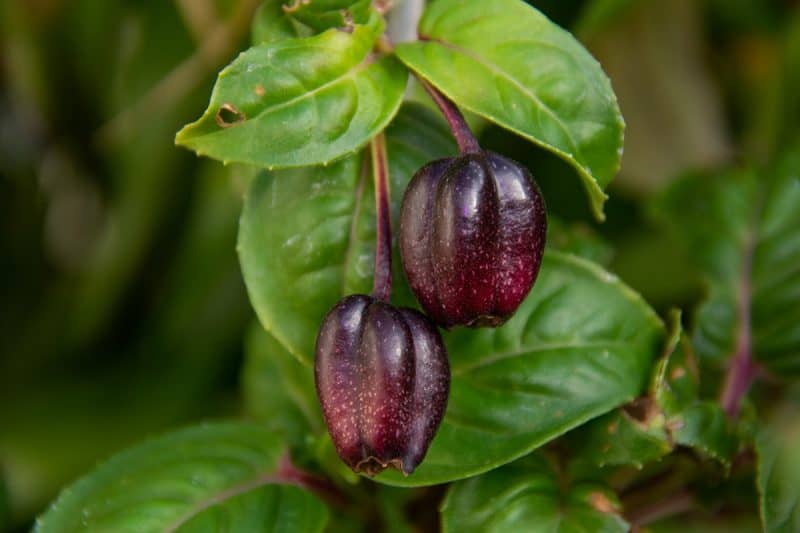
While most people are growing fuchsias for the flowers, don’t forget the berries. As the flower matures and falls off, the berry of the plant stays behind and starts to ripen. The berries can be anywhere between 1/2 an inch to an inch on some of the hybrids.
Wait until they are soft and as dark as possible. Taste one, and if it is sweet, you know when to pick the rest.
They don’t store well, so if you need to save them to get a good amount, freeze them like any other berry.
You can use these wonderful berries to make jams and jellies, add to fruit salad and deserts or simply eat fresh.
